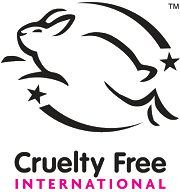Confused about a certain beauty label that you see on beauty or skincare products? How do you know if something is really “organic” or “natural” as they claim to be?
I’ve complied a list of the most common beauty labels used in the beauty and makeup industries. Hope this list will help you make better shopping decisions. If you see a label that is not in this list, please contact me and I will add it!
Common Beauty and Skincare Labels
CONTAINS ORGANIC
If you see “Contains organic” on a beauty label, it indicates that the product may be certified to the NSF 305 Personal Care Standard. This standard requires that the product have at least 70% organic ingredients
MADE WITH ORGANIC
If you see “Made with organic” on a beauty label, it indicates that the product may be certifed to the USDA NOP standard which require the product to have at least 70% organic ingredients.
NATURAL
The word “Natural” seen on beauty labels doesn’t actually mean anything. Its more of a marketing gimmick.
DERMATOLOGICALLY TESTED
If you see the words “Dermatologically Tested”, it simply means that the product was at some point tested on human skin. However this is more of a marketing gimmick because there are no standards that govern what this label means or exactly how the product was tested.
ORGANIC

(Public Domain, https://commons.wikimedia.org/w/index.php?curid=912579)
If you see the word “Organic” on the label, also take the time to look for the USDA Organic Seal. This seal indicates that the product contains at least 95% organic ingredients. The word “Organic” can be a good sign that the product uses organic ingredients but the USDA Organic Seal will provide more confidence. Find out more here
CRUELTY-FREE

(By The logo is from the http://www.gocrueltyfree.org/_assets/images/styling/leapingBunny/placeholder-img-1.png website., Fair use, https://en.wikipedia.org/w/index.php?curid=18030982)
Look for a “Leeping Bunny Logo” on animal cruelty-free products. The logo indicates that the product has passed the Coalition for Consumer Information on Cosmetics (CCIC) standards. CCIC places strict standards on certification and the “Leeping Bunny Logo” is internationally recognized. Find out more here
PAO (Period After Opening) Symbol

(By Kennedy – Own work, CC BY-SA 4.0, https://commons.wikimedia.org/w/index.php?curid=57824320)
Look for a symbol that looks like an opened makeup container with the number of months or years written on or below the container. This is the PAO symbol which tells the user how long they should keep the product after opening it. Wikipedia has a few good examples of what the symbol looks like. Check it out here.
EcoCert
Look for the “EcoCert Cosmos Organic” label on makeup products. Products that carry this label has passed EcoCert’s strict requirements for the use of organic ingredients. You can find more information for EcoCert here.
Common Comedogenic Makeup Ingredients
acetylated lanolin
algae extract
algin
benzoic acid
cajeput oil
carrageenan
cetyl acetate
coal tar
cocoa butter
coconut butter
colloidal sulfur
corn oil
cotton aws oil
cottonseed oil
crisco
decyl oleate
dioctyl succinate
glyceryl stearate SE
glyceryl-3-disostearate
hydrogenated vegetable oil
ingredients that start with “iso” (ex. isocetyl stearate, isopropyl myristate, isostearyl acid)
lanolic acid
laureth 4
lauric acid
linseed oil
mink oil
myreth 3 myrstate
myristic acid
myristyl lactate,
myristyl myristate
octyl palmitate,
octyl stearate
oleic acid
oleth-3
PG monostearate
polyglyceryl-3-disostearate
potassium chloride
PPG 2 myristyl propionate
red algae
shark liver oil
table salt or sodium chloride
sodium lauryl and laureth sulfate
solulan 16
sorbitan oleate
sorbitan sesquinoleate
soybean oil
steareth 10
stearic acid tea
stearyl heptanoate
sulfated castor oil
sulfated jojoba oil
syearyl heptanoate
wheat germ glyceride
wheat germ oil
xylene